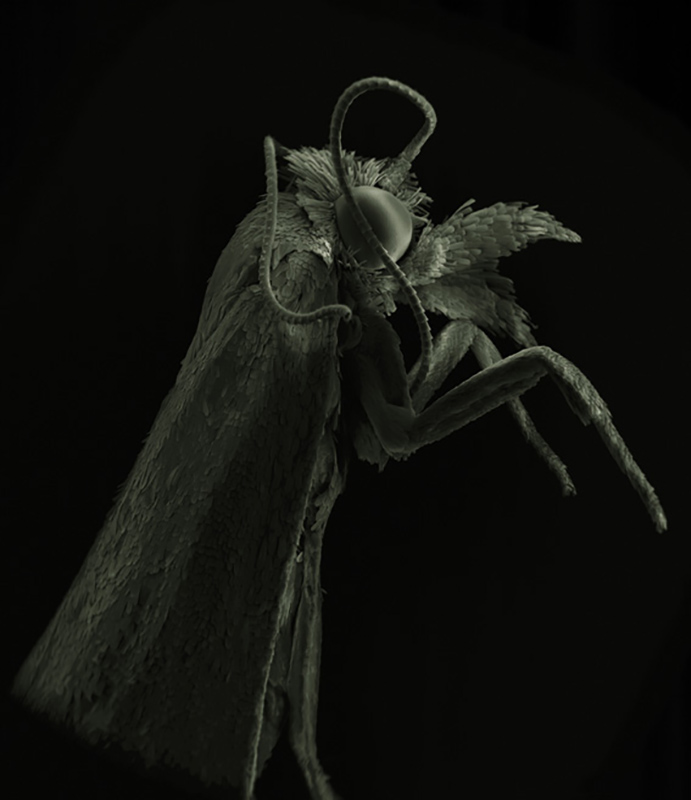Stephanie Valentin - Closer
What does it mean when something you cannot see, or perhaps you didn’t even know existed, disappears forever? Stephanie Valentin’s current exhibition Closer responds to this enigma, bringing the perpetually overlooked up close into a memorable encounter.
Valentin’s new work continues to explore an ongoing interest in the human relationship to the natural world and the ecological effects of climate change. Through her unorthodox use of the electron microscope, the images magnify small and fragile insects up close to the scale of our own bodies. These haunting portrayals of seemingly insignificant creatures engage the viewer in their stark unfamiliarity, and yet their curiously human-like presence invites an interaction, underscoring the kinship we have with other living beings. Quite removed from the cold science that made them possible Valentin engages a distinctly photographic aesthetic, creating warm intimate portraits that invite the viewers’ empathy for an otherwise invisible subject.
Blurring the realms of reality and fantasy, the subseries Adaptations, artfully plays with the limits of nature’s design. Valentin has drawn on the scientific expertise in ion-beam technology at the University of NSW, to create microscopic sculptural interventions on the physical forms of found dead insects. Simulating accelerated evolutionary changes, a specialized electron microscope is employed to literally etch with atoms, sculpting patterns and perforations in the insects’ bodies. While crossing into the realm of science fiction, these speculative adaptations respond to a very real ecological dilemma: the limited ability of many species to move habitat or evolve quickly enough to survive a rapidly changing climate. Imagine insect eyes with physically enhanced structure, scales on a butterfly’s wing mutated for improved flight, or additional breathing holes, multiplied in hexagonal formation.
Valentin brings into view a surprising parallel world, and enables us to better connect with these fellow earth dwellers. At a time when both science and species, are pushed to their limits, her works expand the possibilities of the scientific image to provoke and engage.
The artist would like to thank Professor Paul Munroe at UNSW, whose expertise in Focused Ion Beam technology made the manipulations of the Adaptations series possible.

